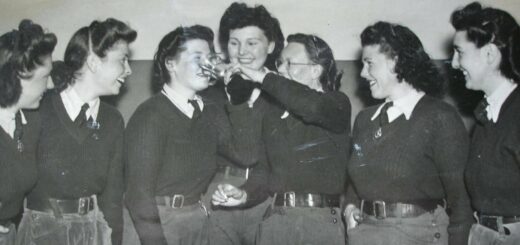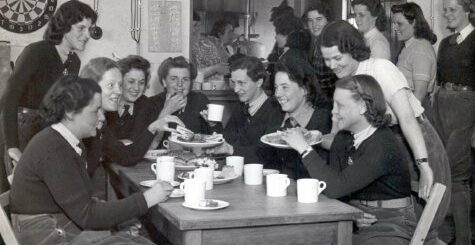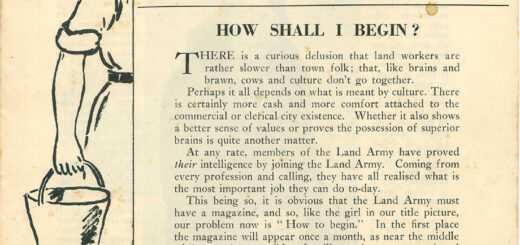Running the WLA: Lady Denman
This month’s post explores the vital work of Honorary WLA Director Lady Gertrude Denman and the role of the Women’s Institutes (WIs). The WI not only influenced the lives of those running the WLA such as the Lady Denman and the women making up her county committees, but also the lives of some of those women, working the land throughout the twentieth century.
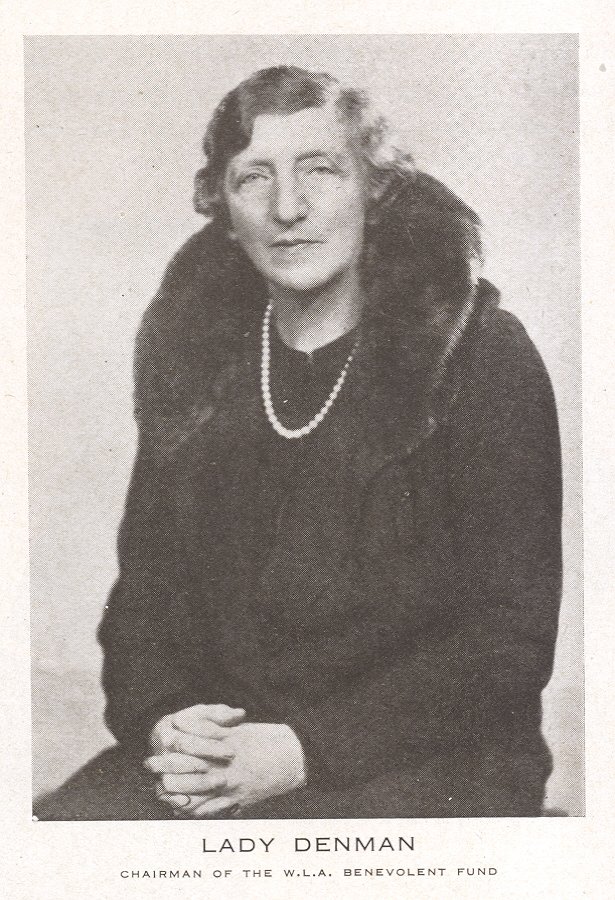
Source: Stuart Antrobus
Forming the WI and WLA
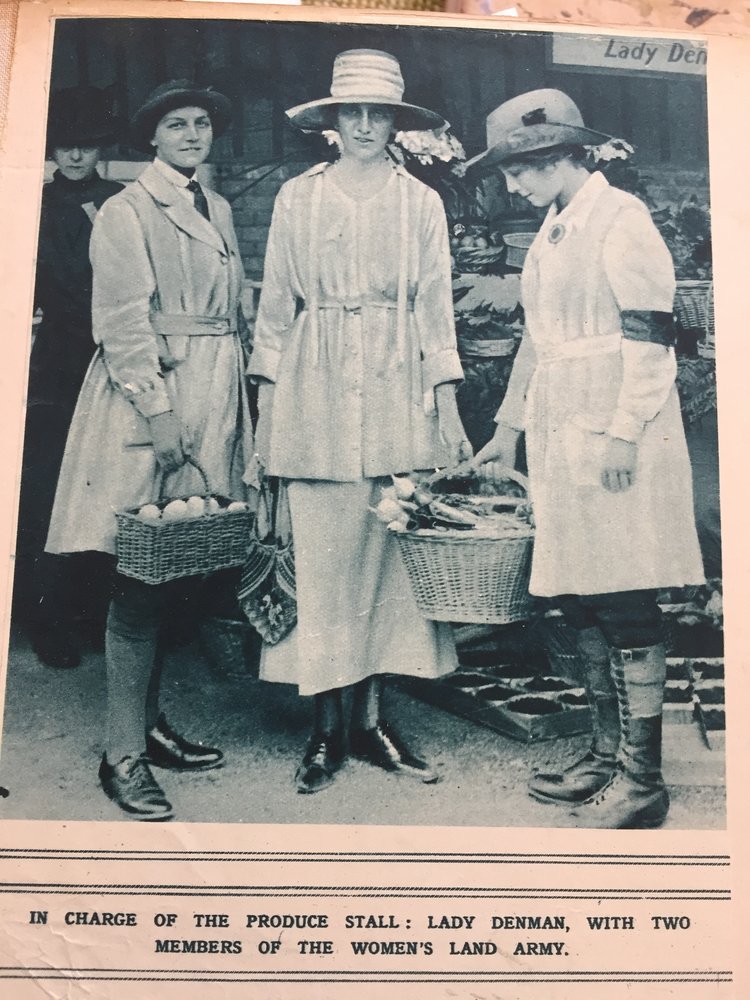
Source: Balcombe Place website.
From 1908-1910, Lady Denman sat on the Executive Committee of the Women’s Liberal Federation. Alongside this political work, she was also involved in an array of charitable initiatives. After marrying her husband Baron Thomas Denman and returning from a brief stay in Australia, she became involved with the government-sponsored Agricultural Organisation Society. It was in her role as Chairman of a subcommittee, that she went on to eventually found the Women’s Institute, with others, in 1915. In 1917, she became the WI’s first national Chairman. She chaired the National Federation of Women’s Institutes for almost 30 years.
The First World War was a vital context to the formation of the WI. The WIs encouraged rural women to become involved in their local community by growing and the preserving of food, during a period when there were significant concerns for food supplies. As the WI began to establish itself across the various counties, from 1917, so too did the First World War WLA. The links between the two organisations were so strong that The Landswoman journal was set up for both the WLA and WI (January 1918 to December 1919).
Lady Denman had been the Assistant Honorary Director of the WLA, 1917-19, during the First World War. In the Second World War, she became its Honorary Director. Lady Denman’s experiences in both the WLA and WI allowed her to draw on a pre-existing, carefully-cultivated network of country women to help set up the national organisation.
Honorary Director of the WLA
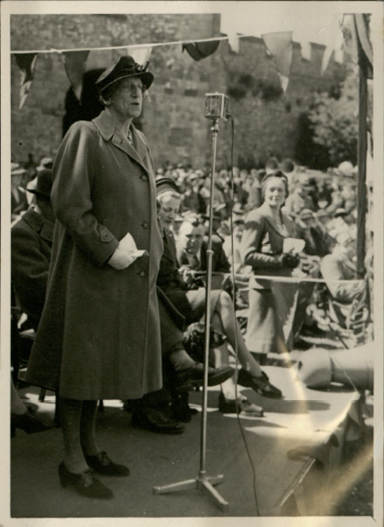
Source: Garland N22143, West Sussex Record Office
Lady Denman was a hands-on director in all sorts of ways. Appreciating how important the uniform was to the identity of the WLA, she is said to have commissioned a top Paris designer, Charles Frederick Worth, to design the now iconic short WLA greatcoat. Lady Denman appreciated that the coat needed to be practical, attractive, and above all warm, for when women worked outside in the cold. She wanted to create a uniform which was both practical and one that women would feel proud of wearing.
In 1940, Lady Denman issued a specific appeal for WI’s to support the work of the WLA – in particular addressing farmers’ wives. Farmers were sceptical about whether women could really take the role of men in the fields and expressed concern about setting them to work. Lady Denman noted how members of the WI:
‘can do much to by their influence and encouragement to enable the Land Army to take its full share in this task [to increase food production]. The prejudice against a woman attempting to do a man’s work dies hard’.
Letter written by Lady Denman published in the Home and Country magazine of the National Federation of Women’s Institutes, in October 1940, cited in ‘Women in Uniform 1939-45’, Jane Waller and Michael Vaughan-Rees, p. 80.
Some Land Girls were invited to attend WI meetings, and in certain villages, such as Doddington in 1943, women became honorary members. Some WI women invited Land Girls to take hot baths in their houses. Though these might seem like small acts today, a hot bath was a welcome luxury at the end of a long day out in the fields, and many land girls were billeted in farm worker’s cottages which did not have bathrooms. Sometimes support included a weekly catch up over tea, where Land Girls could air their concerns and worries, from complaints about their treatment by local farmers, to how to, in a few cases, deal with an unexpected pregnancy.
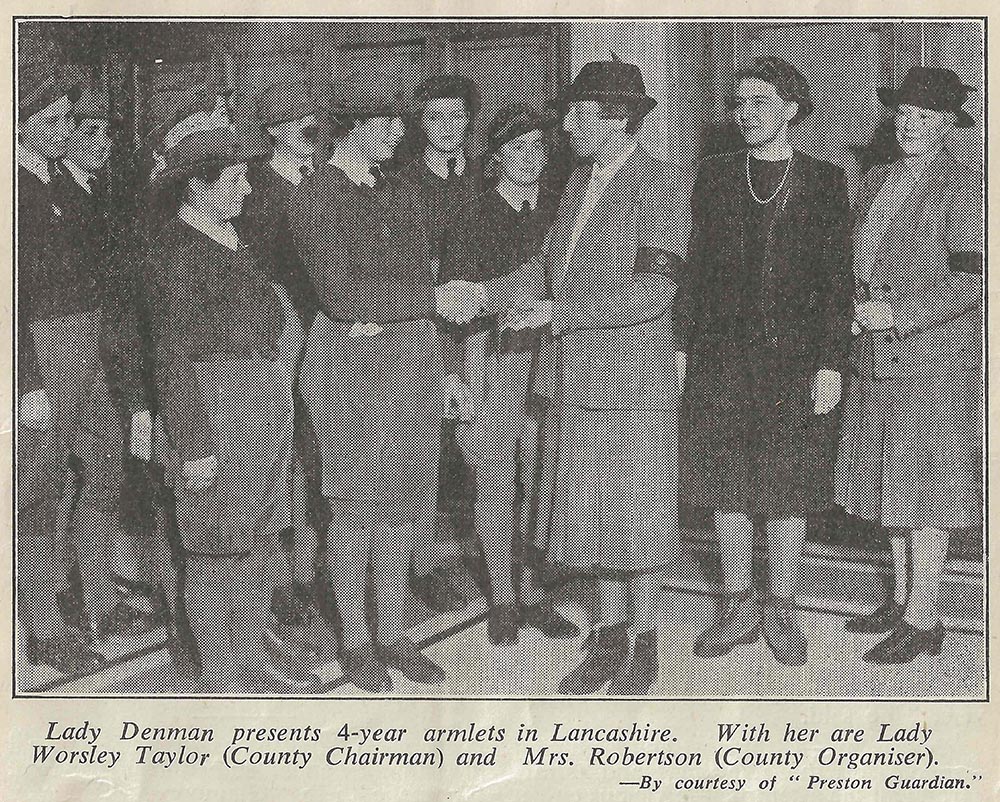
Source: The Land Girl, March 1944, p. 5
Resignation and Legacy
Throughout her time as Director, Lady Denman assumed responsibility for ensuring her young women received a fair wage and health insurance. When in 1945, Land Girls were not to receive the same post-war benefits as women in other civilian occupations, she resigned in protest at the poor treatment of the WLA – the ‘Cinderella Army’.
With a long involvement in rural life, Lady Denman was vital to the success of the WLA. Her drive, passion, business-like efficiency and strong character, was critical to maintaining food production and challenging the scepticism expressed towards female farm labourers.
Find out more
Maggie Andrews, The Acceptable Face of Feminism: The Women’s Institute as a Social Movement, 1st Ed. (London: Lawrence & Wishart Ltd, 1997).
Stuart Antrobus, ‘We Wouldn’t Have Missed It For The World’: The Women’s Land Army in Bedfordshire, 1939-1950 (Copt Hewick: Book Castle, 2008).
Gervas Huxley, Lady Denman, G.B.E. 1884-1954 (London: Chatto and Windus, 1961).
Julie Summers, Jambusters: The Remarkable Story Which Has Inspired the ITV Drama Home Fires (London: Simon & Schuster UK, 2015).
Nicola Tyrer, They Fought in the Fields: The Women’s Land Army (Stroud: Tempus, 2007).
Jane Waller and Michael Vaughan-Rees, Women in Uniform 1939-45 (London: PAPERMAC, a divsion of Macmillan Publishers Limited, 1989).
